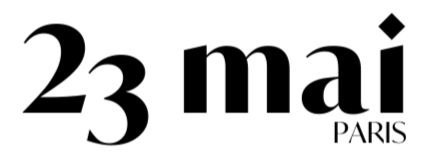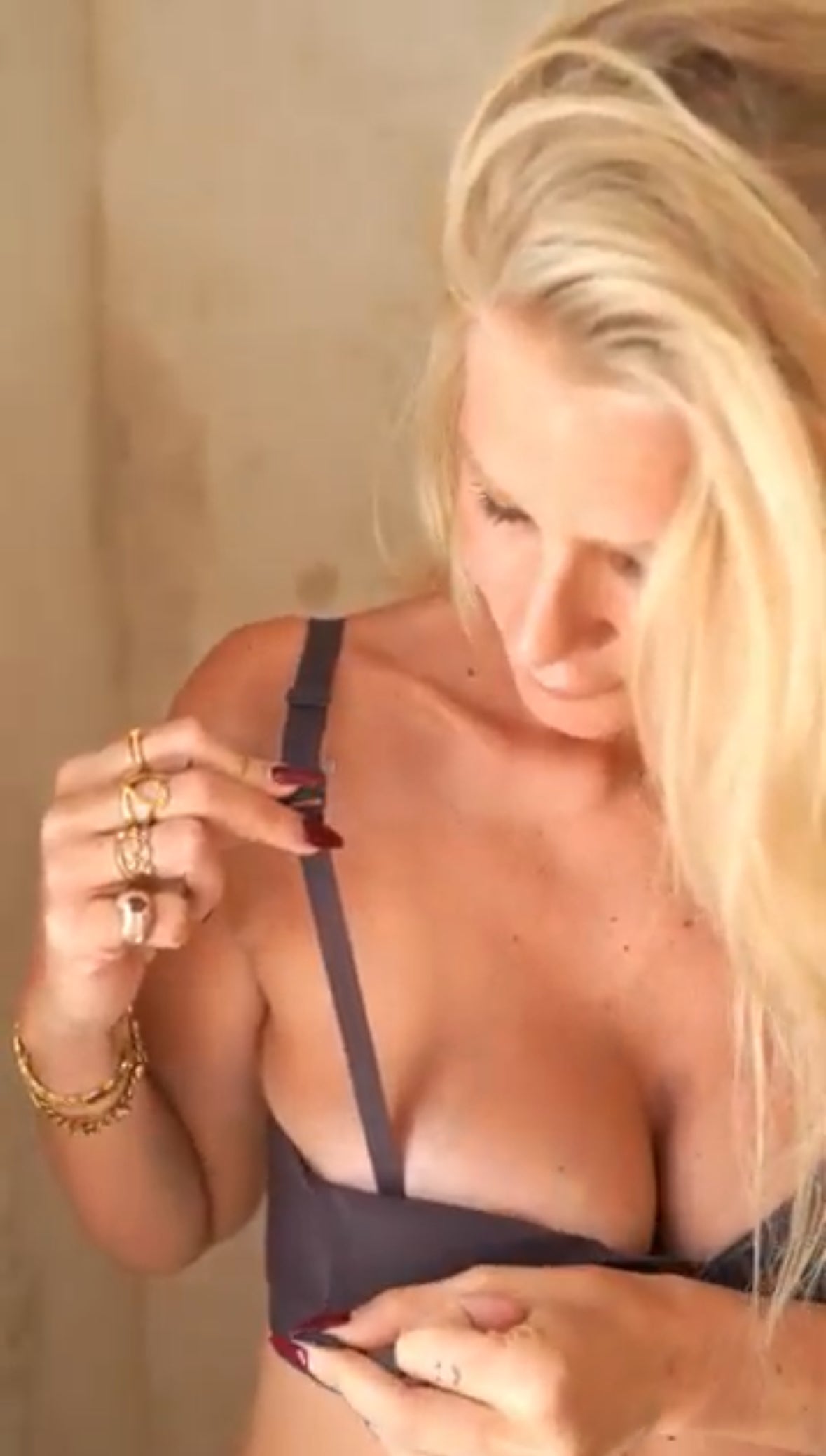
What is weaning
A transition full of love and understanding. Complete guide to 23 mai Paris.
Hello, dear May 23 moms! Today, we're going to tackle a subject that sooner or later affects all breastfeeding moms: weaning. This word can evoke a whirlwind of emotions: nostalgia, relief, sadness, expectation... It's a natural stage, and like all phases of motherhood, it's unique to each family. At 23 mai Paris, we want to accompany you through this process by offering clear information, practical advice and plenty of support so that you can live through this transition in the most loving and respectful way possible for you and your baby.

What exactly is weaning? More than just stopping breastfeeding
Weaning is not simply a matter of your baby ceasing to drink breast milk. It's a gradual transition process in which breast milk is replaced by other foods and drinks, and new forms of emotional nourishment and comfort, previously provided by the breast, are found. It's the end of a beautiful cycle and the beginning of a new way of interacting and feeding each other.
It can be initiated by the baby (natural or child-led weaning) or by the mother (mother-led weaning). There's no "right" or "wrong" way to proceed in absolute terms, as long as it's done with love, patience and respect for each individual's needs.

When is the "right time" to wean?
That could be the million-dollar question. And the most honest answer is: the right time is the right time for you AND your baby.
Child-directed weaning (or natural weaning) :
Ideally, weaning occurs when the child is ready and gradually loses interest in the breast. According to anthropologist Katherine Dettwyler, this usually happens between the ages of 2.5 and 7, if the process follows its natural course. Children space out their feeds, asking for less, until one day they simply don't ask or forget. This is the gentlest, most natural weaning process.
Mother-directed weaning:
There are many valid reasons why a mother may decide to start weaning, even if her child is not yet showing any signs. This may be due to a return to work, a new pregnancy (although it is possible to breastfeed during pregnancy), medical reasons or simply because the mother feels that her breastfeeding journey is over and wishes to regain autonomy over her body. And all this is valid!
Recommendations vs. personal reality:
As we mentioned in our article How long should I breastfeed my baby?the WHO recommends exclusive breastfeeding up to 6 months of age, followed by complementary feeding until 2 years of age or beyond. This is an excellent recommendation, but the final decision rests with you and your family.
The important thing is that this decision is informed and conscious, and not based on external pressures or myths.
Preparing for weaning: an emotional and practical journey
Before you begin, take a moment for yourself:
-
Acknowledge your emotions: It's normal to have mixed feelings. You may feel sad at the idea of ending this intimate stage, relieved to have some space again, guilty if you think you "should" continue, or happy to be starting a new phase. All your emotions are legitimate. Talk about them.
-
Talk to your child (if he's old enough to understand): with simple, affectionate words, you can explain that he'll soon stop sucking "the breast" or "mommy's milk", but that mommy will always be there to cuddle him, give him kisses and read him stories.
-
Choose the right time: Avoid starting weaning during a period of great change or stress for your child (starting daycare, moving house, arrival of a little brother or sister, illness).
-
Seek support: Talk to your partner, a friend who's been through the same thing or a breastfeeding support group. It's very important to have a support network.

The art of respectful weaning: step-by-step strategies
The key to respectful weaning is this: GRADUALLY! Abrupt weaning can be traumatic for your baby and painful (physically and emotionally) for you.
"Don't offer, don't refuse
This is a good starting point, especially for older children. Simply don't actively offer the breast, but if your child asks for it, don't refuse outright (at least not at first). Observe his reaction and the frequency with which he asks for it.
Stop feeding one at a time:
Identify the "least important" feed: this is usually a mid-morning or mid-afternoon feed, not too associated with sleep or great comfort.
Replace it: offer instead a healthy, tasty snack (a piece of fruit, a small glass of water or age-appropriate milk if he's over a year old), a special game, a story, a trip to the park, or simply lots of cuddles and attention.

Wait a few days (3 to 7 days or more): give your baby and your body time to adapt before trying to eliminate the next feed.
The most difficult feeds to eliminate are generally those associated with sleep (nap, night-time, waking up) and those that bring immediate comfort after a fall or upset. Save them for last.
Shorten feeding times: If your child asks for the breast, you can gently say: "Of course, my love, just a little". And gradually reduce the amount of time he spends at the breast when you want to stop feeding. You can count to 10 or sing a little song.
Distraction and redirection :
When you see that he's going to ask for the breast at a time when you're trying to avoid it, anticipate by proposing an activity he really enjoys. "Do you want to read this book?" "Shall we play with the blocks?"
Change routines:
If you always breastfeed in the same chair before a nap, try changing the routine. You can read a story in bed or take a short walk to relax before bedtime.
Involve your partner or another trusted person:
Dad or another person can take over some of the routines you used to breastfeed him, such as bedtime or calming him down after a little fall, by offering other forms of comfort.

Clothes that "help":
During the weaning process, you may prefer to wear clothes that do not facilitate access to the breast, such as our 23 mai Paris blouses and dresses. Milkitmex.com general collection that aren't specifically designed for breastfeeding, to send a subtle signal. However, comfort remains essential, so choose clothes you feel good in.
Navigating nocturnal withdrawal:
Night feeds are usually the last to disappear and often the most difficult.
-
Be prepared for restless nights: this can take time and patience.
-
Make sure he eats well during the day: so he's not really hungry in the evening.
-
Offer him water: if he wakes up, instead of breastfeeding, you can offer him a sip of water.
-
Lots of reassurance: cuddles, caresses, soft singing.
-
Ask Dad or another adult to intervene: sometimes, if Mom isn't very "available", it's easier for the child to console herself with other people.
-
Be consistent but flexible: if one night is very difficult, there's no harm in "giving in" and trying again the next day.
Taking care of your body during weaning A gradual weaning is not only better for the baby, but also for you, as it helps prevent :
-
Breast congestion: if your breasts are very swollen or painful, you can :
-
Extract a small amount of milk by hand or with a breast pump: just enough to relieve the pressure, not to empty the breast (which would stimulate production even more).
-
Apply cold compresses or cold collar sheets to your bra to reduce inflammation.
-
Blocked ducts or mastitis: abrupt weaning increases this risk. If you notice a red, hot, painful lump, or if you have a fever, consult your doctor IMMEDIATELY.
-
Wear a comfortable, supportive bra: it shouldn't be too tight.

Caring for mom and baby's heart
Withdrawal is an important emotional stage.
-
For your baby/child: He may feel confused, frustrated or sad that he no longer has unlimited access to the breast. Validate his feelings ("I understand you're sad because you wanted milk, Mommy's going to give you lots of cuddles"). Start with lots of physical contact, play and special attention.
-
For you, Mom: You may feel a mixture of relief, sadness at the end of a stage, and even hormonal fluctuations that affect your mood. Be easy on yourself. Talk about how you feel. Celebrate your incredible breastfeeding adventure, however long it lasts.
What to suggest after weaning
-
Under one year of age: if weaning takes place before the age of one, your child will need infant milk as his or her main source of milk. Consult your pediatrician.
-
Over one year : they can drink whole cow's milk (or other enriched plant milks, in case of allergies or by family choice, always after consulting the pediatrician) in a small glass. In addition to water and a balanced diet.
-
Comfort and connection: Find new loving routines: reading together, singing, giving a massage before bed, giving a special cuddle.

What to do if weaning needs to be accelerated?
Sometimes, for urgent medical reasons or other unavoidable circumstances, weaning must be more rapid. In such cases :
-
Seek intensive professional support: a lactation consultant and your doctor can guide you.
-
Congestion management: it may be necessary to use medication to help "dry up" the milk (on medical prescription) and more actively manage congestion.
-
Much more comfort and emotional support for the baby: the change will be more brutal.
Remember, you're not alone
Withdrawal is a road many of us have traveled. Find your tribe:
-
Your partner: support is essential.
-
Your friends and family: they need to understand you and not judge you.
-
Breastfeeding support groups: a wonderful source of information and support.
-
Professionals: lactation consultants (IBCLC), breastfeeding-friendly pediatricians.
-
Community 23 mai Paris : continue exploring our blogs for breastfeeding mothers to find other topics that interest you.

A new start full of love
Withdrawal is a path many of us have taken. Find your tribe:
-
Your partner: support is essential.
-
Your friends and family: they need to understand you and not judge you.
-
Breastfeeding support groups: a wonderful source of information and support.
-
Professionals: lactation consultants (IBCLC), breastfeeding-friendly pediatricians.
-
Community 23 mai Paris : continue exploring our blogs for breastfeeding mothers to find other topics that interest you.
A new start full of love
Maman 23 mai Paris, weaning is not the end of the bond, but its transformation. It's the end of one beautiful chapter to begin another, full of new ways to show your love, care and connection. Whatever weaning path you choose, do it with confidence, patience and lots of love for yourself and your little one. And don't forget that 23maiparis.com is with you every step of the way, offering you clothing and accessories designed for your comfort and well-being.
Celebrate every drop, every cuddle, every look shared during breastfeeding. You've done a wonderful job!
Are you in the process of weaning or have you already passed this stage? What advice would you give to another mom? Share your wisdom in the comments!












Leave a comment
This site is protected by hCaptcha, and hCaptcha's Privacy Policy and Terms of Service apply.